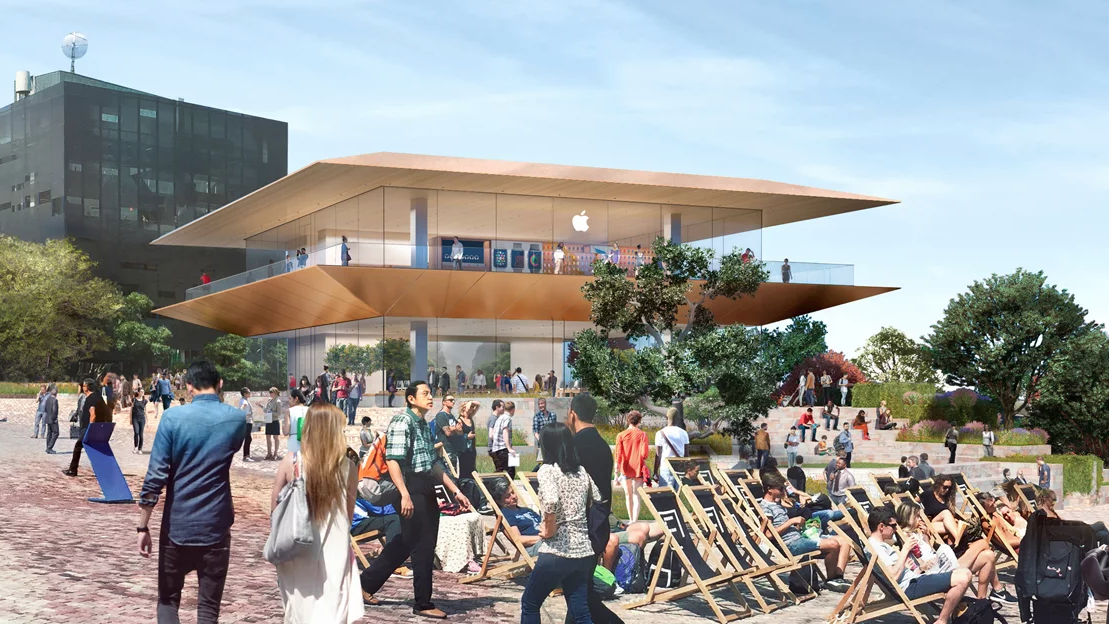
The announcement by the Victorian state government just before the long Christmas-New Year break that one of the buildings in Melbourne’s Federation Square was to be demolished and replaced by an Apple "global flagship store" raised many eyebrows across the city and the nation.
To hand over such an important piece of the city’s cultural infrastructure to a private company that has long faced criticism for its outsourcing and taxation practices was one thing, but to allow that same company to dominate what has become an important civic and public space was another.
Critics accused the government of caving into corporate financial pressure, while the government and the management team at Fed Square argued that the Apple store was an appropriate use of designated commercial space that was underperforming economically. Even one of the original architects of the Square, Donald Bates, came out in favour of the proposal, arguing that it was "an affirmation of the original intent and aspiration of Fed Square – to be the centre of action in Melbourne".
In the six weeks or so since the proposal was announced, some of the secrecy surrounding the design of the new store has been lifted, but still Melburnians are not happy.
A change.org petition opposing the proposal has received almost 30,000 signatures, while Melbourne City councillors have voiced strong concerns about both its location and design. One councillor likened the current design to a "Pizza Hut pagoda".
As the historian of Federation Square, this debate is fascinating to me, not least because it shows just how rapid has been the turnaround in Melbourne’s sense of attachment to a place that for much of its early life was considered something of an embarrassing joke – architecturally ugly, poorly designed and essentially an expensive folly by former premier Jeff Kennett.
Like many Melburnians, I was originally a critic of the Square, but like them I was proven wrong, and with millions of other people locally and internationally I have since become a real fan of the place. As I write in my history, Federation Square works because it seems to represent the city that many of us like to think Melbourne has become in recent decades – it is modern, quirky, and perhaps most importantly freely accessible to all members of this extraordinarily diverse city.
For much of its short life the Square’s management team has sought to balance the commercial imperatives of keeping it financially viable while ensuring that it doesn’t become just another shopping or tourist "destination". In doing so they've adhered to what I've called the Square’s "founding document" the Civic and Cultural Charter agreed between the Kennett state government and the city council in 1997, which specifies that where there is a clash between commercial imperatives and civic and community uses of the Square, the latter should prevail.
Much of the opposition to the proposed Apple store comes from a sense that this is a reversal of that agreement; that commerce – and in this case the commercial needs of one business in particular – are taking precedence over those of the public. I share this concern.
As a historian of the fortunes of the contemporary city internationally, I also have a very strong view that granting Apple access to this key urban space is a shortsighted move that will have long-term negative implications for Melbourne.
While the current state government might think that capturing one of Apple’s few "global flagship" stores is a stunning international "coup" for Melbourne, and evidence that the city is now a major international player, in fact this controversy suggests exactly the opposite. Genuine global cities are the headquarters of businesses such as Apple rather than branch offices, and cities that have real economic and cultural clout export their original ideas and institutions to the world rather than buy somewhere else’s off the peg.
Federation Square, with its quirky architecture and celebration of dissent and social and cultural difference, is a marker of Melbourne’s emergence in the late 20th century as a diverse cultural centre where ideas and creativity are recognised and rewarded.
To many of us it's also the long sought-after symbol of what we believe the city is and can be. Handing a key part of that symbolic space over to a multinational corporation is not a mark of arrival as a global destination, but evidence that some of our political leaders still suffer from the old "second city syndrome" and are still prepared to do anything, no matter how cringe-worthy, in order to get noticed on the world stage.





